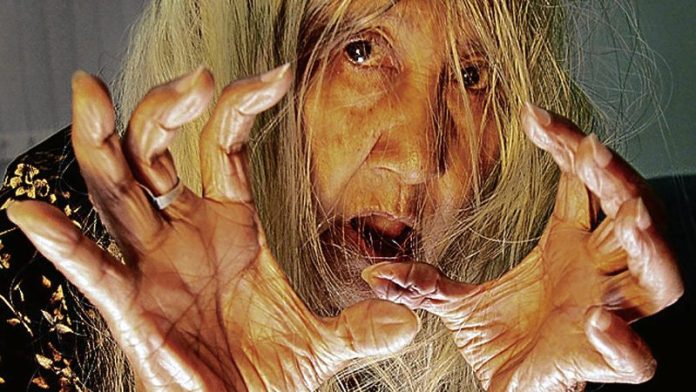Lilia Cuntapay, dubbed the “Queen of Philippine Horror Movies,” was specially mentioned in a “mangkukulam” story during one of our Mandatory Continuing Legal Education lectures.
(All members of the Integrated Bar of the Philippines are required to complete every three years at least 36 hours of MCLE activities. This is to ensure that keep abreast with law and jurisprudence, maintain the ethics of the profession and enhance the standards of the practice of law.)
With her long white hair and scary old lady appearance, our lecturer cited Cuntapay in describing one of the parties involved in a legal case where the accused called the complainant a “mangkukulam.”
Cuntapay rose to fame for her role in the 1991 horror movie “Shake, Rattle and Roll.” She died in 2016 at the age of 81 due to a spinal cord illness.
The dispute narrated by our lecturer came close to the 1966 Supreme Court case of People vs Sario (G.R. Nos. L-20754-20759) where informations charging the crime of oral defamation were filed against four accused for allegedly having called complainant a “mangkukulam.”
The accused also attributed to her the death through witchcraft of three persons. They added that complainant inherited her power of witchcraft from her father and that she had probably bequeathed it to her child.
According to Article 353 of the Revised Penal Code, the public and malicious imputation of a crime, or a vice or defect, real or imaginary, or any act, omission, condition, status or circumstances tending to cause the dishonor, discredit or contempt of a natural or juridical person, or to blacken the memory of one who is dead, is libelous.
The issue was whether the statements attributed to accused may be considered libelous imputations.
The Supreme Court explained that a “mangkukulam” is a witch, or one who practices witchcraft as the term is derived from the Filipino word “kulam,” which means “witchcraft, sorcery,” while “mang” is “a prefix used to express oneself in or assumption of.”
The English term “witch” refers to one who practices the black art, or magic; one regarded as possessing supernatural or magical power by compact with an evil spirit, especially with the devil; a sorcerer or sorceress.
“Witchcraft” is the practice or art of witches; the practice of black magic; sorcery; enchantments; intercourse with evil spirits; also an instance of such practice.
“Sorcery” is the use of power gained from the assistance or control of evil spirits, especially for divining; divination by black magic; necromancy witchcraft.
The Supreme Court stressed that the word “mangkukulam” is undoubtedly an epithet of “opprobrium.”
To say that complainant is a witch and sorceress, the Supreme Court said, is to impute to her a vice, condition or status that is dishonorable and contemptible since it accuses her of having employed the black art; of possessing supernatural power by reason of a covenant with evil spirits; and of having trafficked with the devil.
According to the lower court, to call another a “mangkukulam” or “witch” is not a malicious imputation because nobody believes anymore in witches and witchcraft in this modern age.
The Supreme Court, however, pointed out that the truth of the statements are open to question because the very declarations made by the accused attest to the contrary.
In any event, the imputed vice or defect need not be real or existing in order that the imputation may be punishable; and imaginary vice or defect is sufficient.
While belief in the existence of witches may have become passe, the terms “mangkukulam” and “witch” have accepted meanings from which it is clear that they are terms of derision, and for one to be so labeled is to be an object of contempt, even of odium.
The complainant was also called an “aswang,” which is defined as an injurious and evil character believed to be capable of assuming various and different forms, especially that of a dog, and harassing usually in the depth of night women who are about to give birth.” The term, like “mangkukulam,” is an offensive and malicious one.
The order of dismissal appealed from was set aside, and the cases returned to the lower court for further proceedings.
Kulam is also featured in the anime “Trese” that touched upon the country’s rich folklore. It is the story of a “mandirigmang-babaylan” who assists the Metro Manila police in solving supernatural crimes.
The country’s supernatural folklore is incredibly diverse and varies from region to region.
“Kulam” is black magic that specifically targets people who have committed a wrong. The “mangkukulam” either harms an effigy to cause corresponding harm to the victim, or physically “sends” objects into the victim’s body. The methods are activated by chants, spells, or symbols.
Atty. Dennis R. Gorecho heads the seafarers’ division of the Sapalo Velez Bundang Bulilan law offices. For comments, email [email protected], or call 09175025808 or 09088665786









